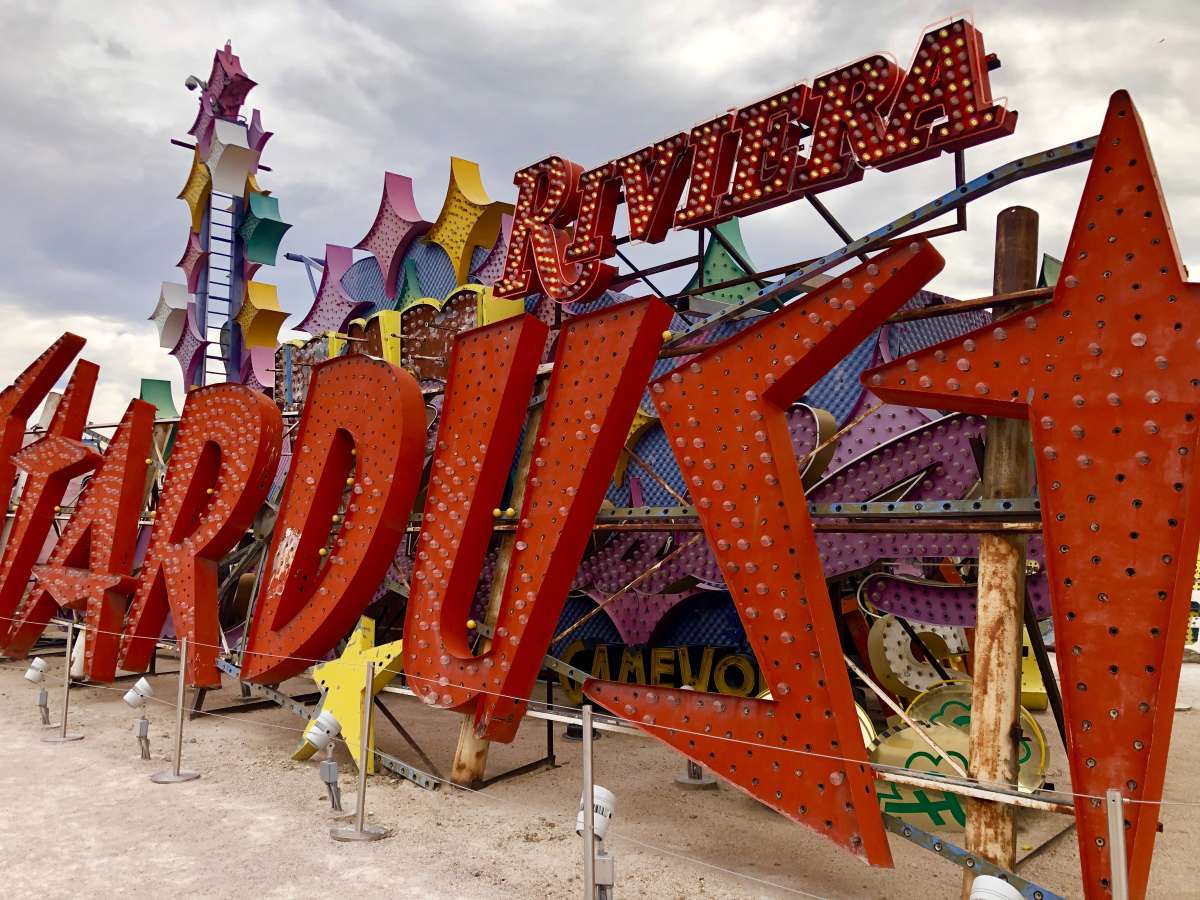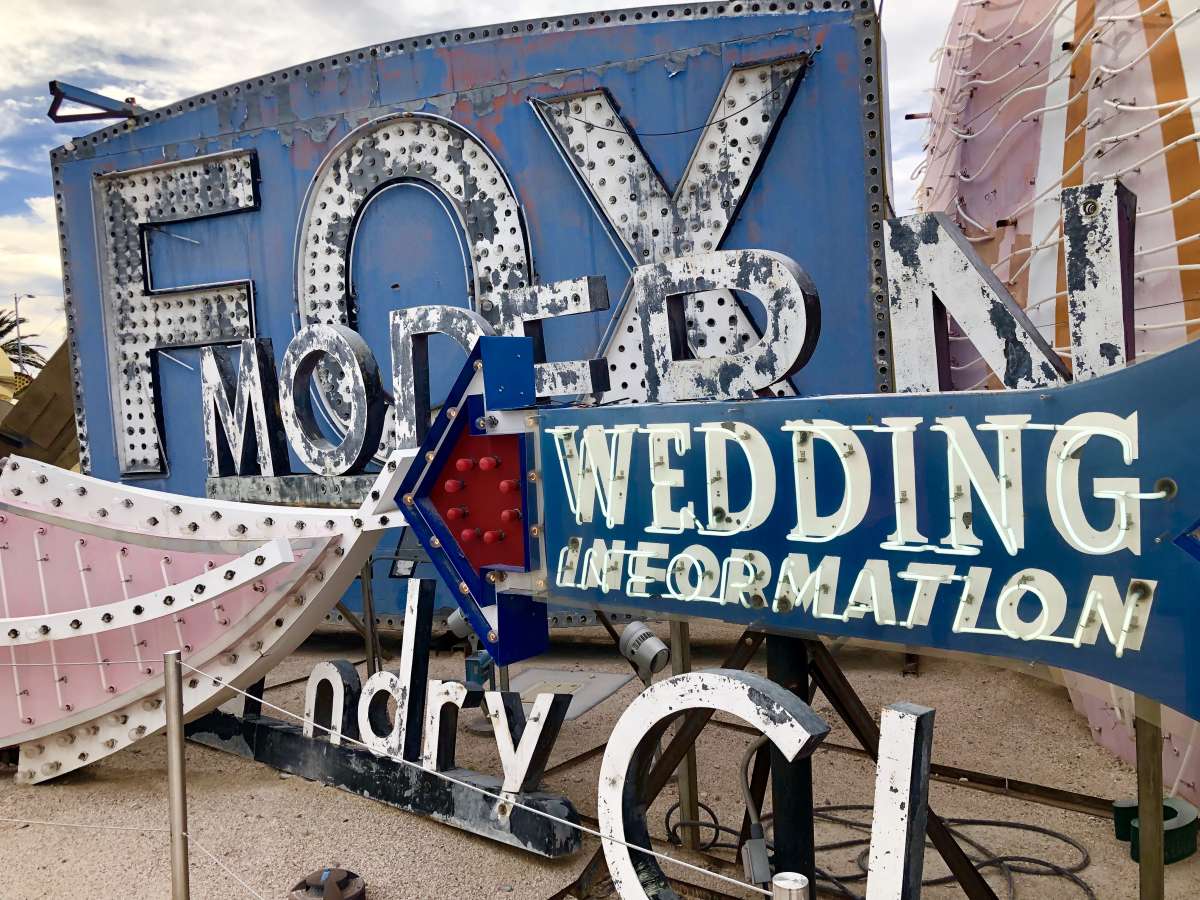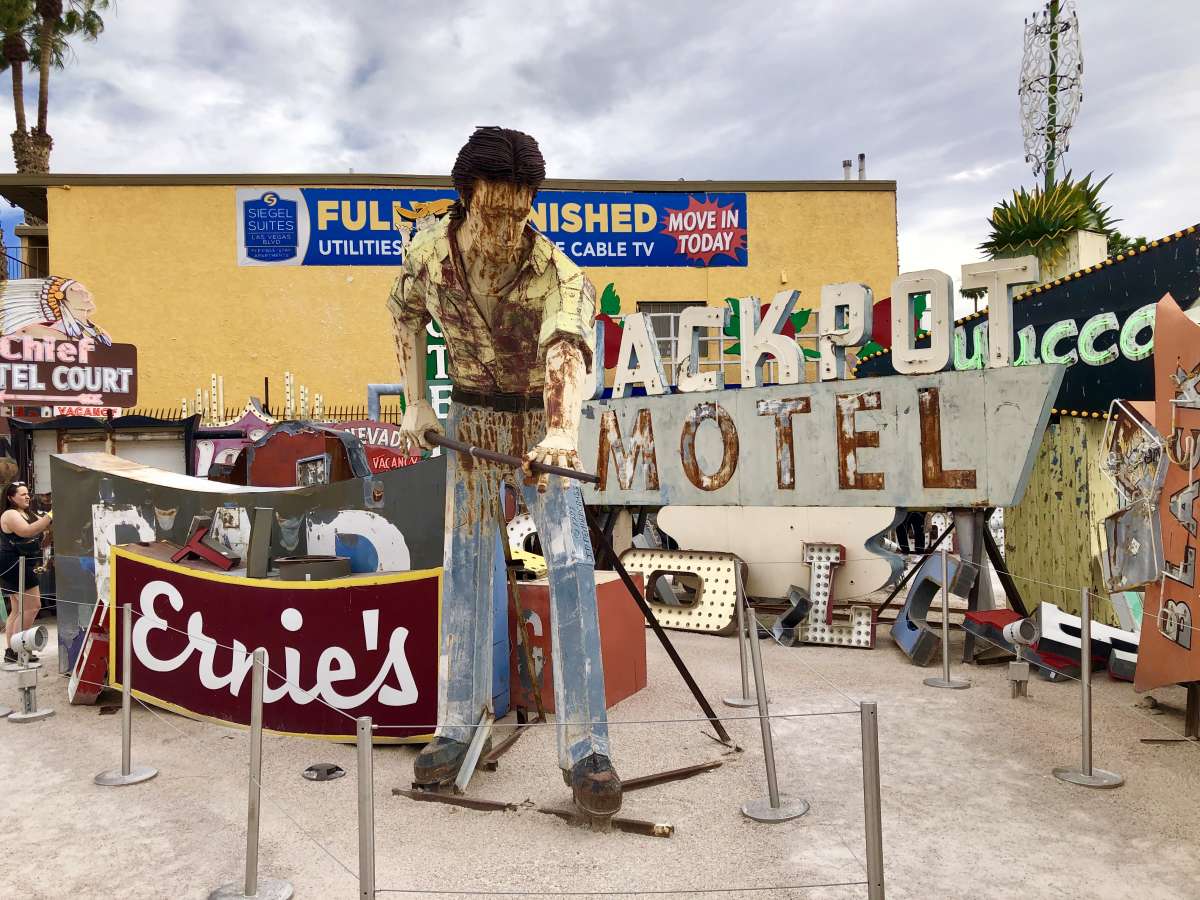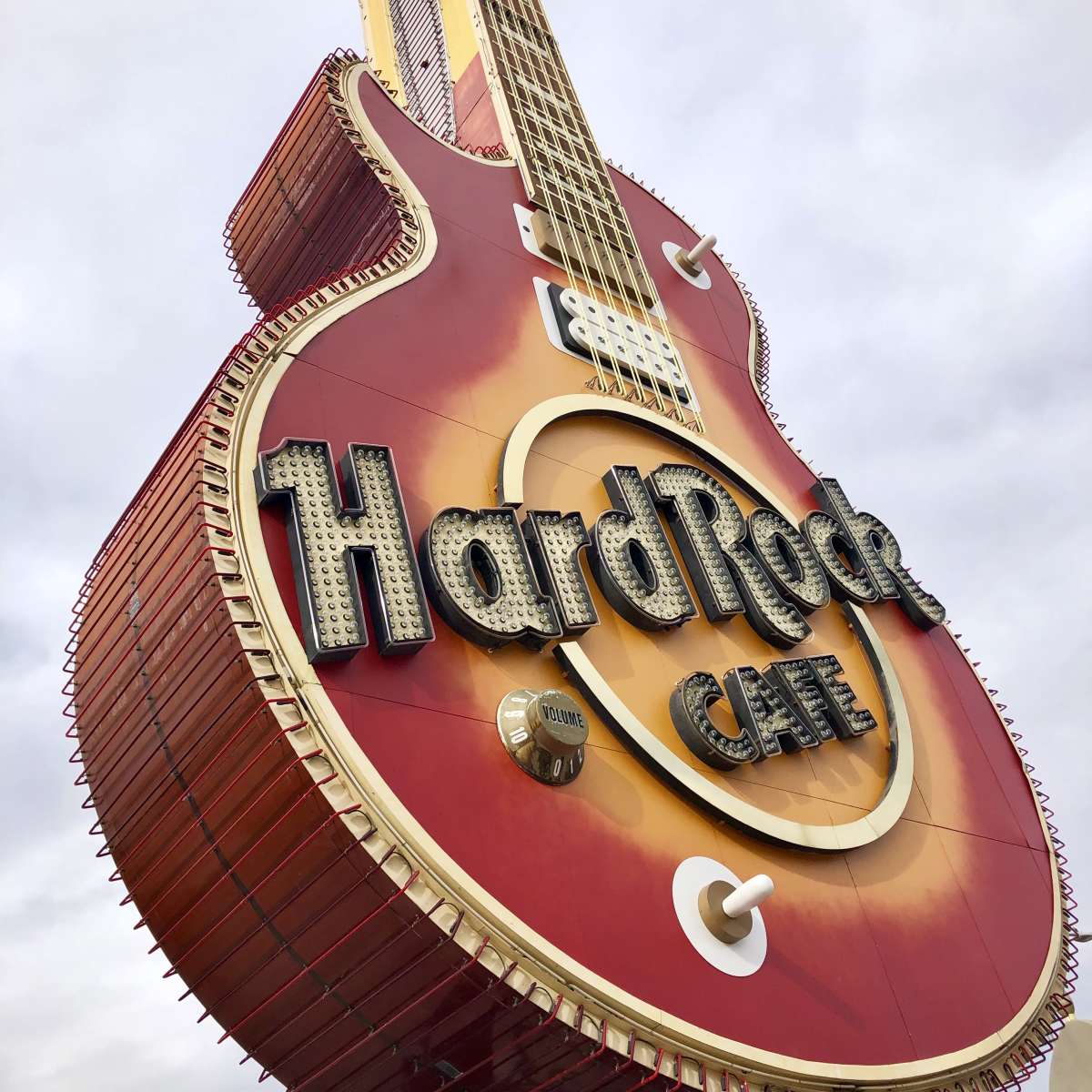The Neon Boneyard 🎰 Las Vegas, NV 🇺🇸
A Glimpse Into Las Vegas' Storied History
The Neon Boneyard (Neon Museum) in Las Vegas, NV

Earlier this month, during a work-related trip to Las Vegas, a colleague and I had a few daytime hours to kill between an event at the Convention Center and our red-eye back to New York City. We spent about an hour touring the Neon Museum, perhaps better known as the Neon Boneyard, at 770 North Las Vegas Blvd.
 An Unusual Graveyard
An Unusual Graveyard
Founded in 1996, the Neon Museum is a non-profit organization dedicated to acquiring, preserving, and exhibiting Las Vegas’ most iconic art form – the neon sign.
Visitors enter the museum through a small Visitor’s Center that, interestingly enough, served as the lobby for the La Concha Motel from 1961 through 2004. The structure, designed by architect-to-the-stars Paul Revere Williams, was transported to the museum site in 2005.
 The Visitor's Center -- formerly the La Concha Motel lobby.
The Visitor's Center -- formerly the La Concha Motel lobby.
The outdoor exhibition space boasts over 200 discarded, unrestored neon signs that chronicle trends and changes in design style throughout the history of Sin City. A few of the signs are illuminated all the time, but most are not.
 The 32-story Stardust Resort and Casino opened in 1958 and was demolished in 2007
The 32-story Stardust Resort and Casino opened in 1958 and was demolished in 2007
 Fun Fact: The first neon sign in Las Vegas was installed in 1927 at the Oasis Restaurant
Fun Fact: The first neon sign in Las Vegas was installed in 1927 at the Oasis Restaurant
Many of the signs currently on display were originally stored in a similar ‘graveyard’ by the Young Electric Sign Company (YESCO) after being discarded by hotels, casinos, and other businesses in Las Vegas. Only a few of the signs have been restored, but for good reason; we learned that restoring a neon sign to its former glory can cost anywhere from $10,000 to $100,000.
 There are approximately 50 wedding chapels in Las Vegas as of this writing
There are approximately 50 wedding chapels in Las Vegas as of this writing
We did not partake in a guided tour of the museum grounds, but knowledgeable, enthusiastic attendants were stationed throughout the exhibition space.
 Elvis, or not Elvis?
Elvis, or not Elvis?
 An original pirate skull from the Treasure Island Casino
An original pirate skull from the Treasure Island Casino
The most impressive exhibit is the famed Hard Rock Café guitar sign, which has been fully restored by YESCO (the original manufacturer) following tremendous fundraising efforts. Restoring and raising the 80-foot tall Les Paul Gibson guitar, which stood for 27 years, cost a staggering $350,000.
 The Hard Rock letters are made up of 1,538 10-watt clear incandescent light bulbs
The Hard Rock letters are made up of 1,538 10-watt clear incandescent light bulbs
 An 80-foot Fender-Stratocaster guitar
An 80-foot Fender-Stratocaster guitar